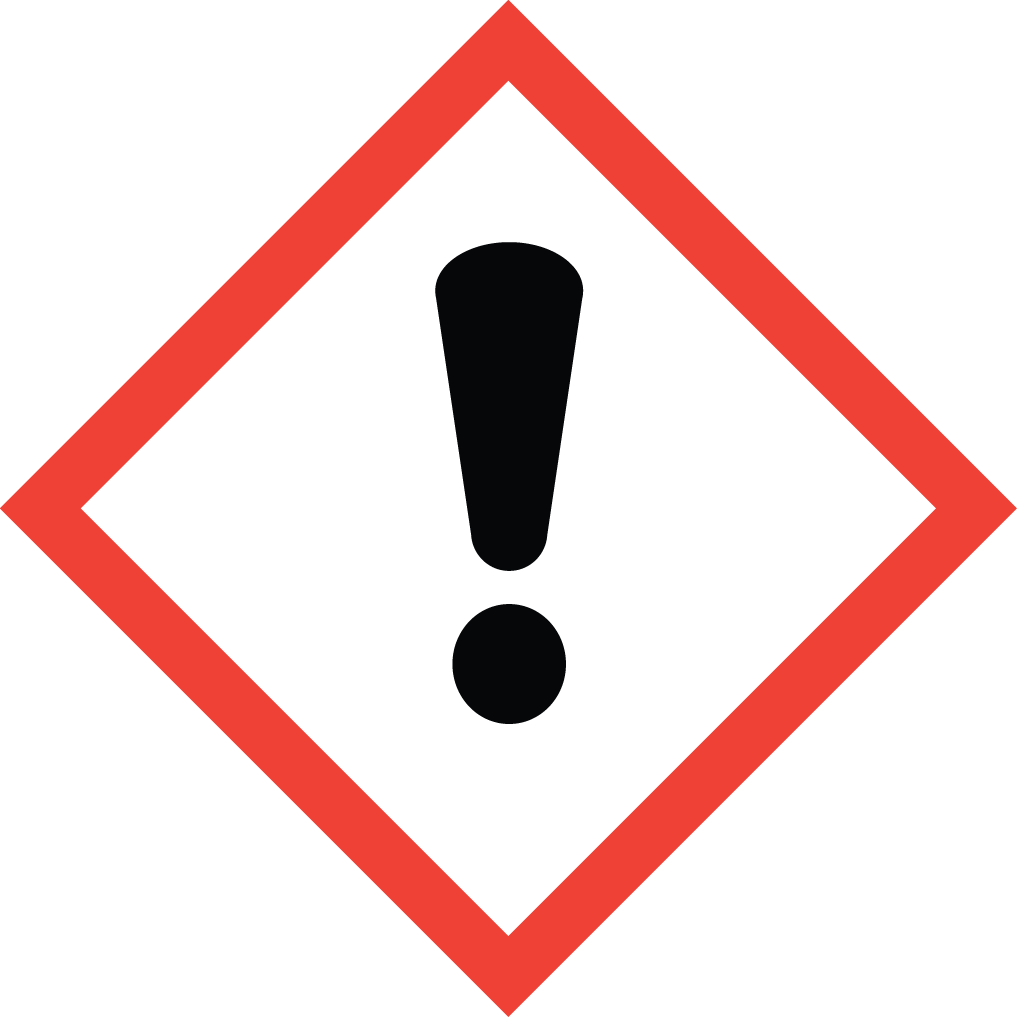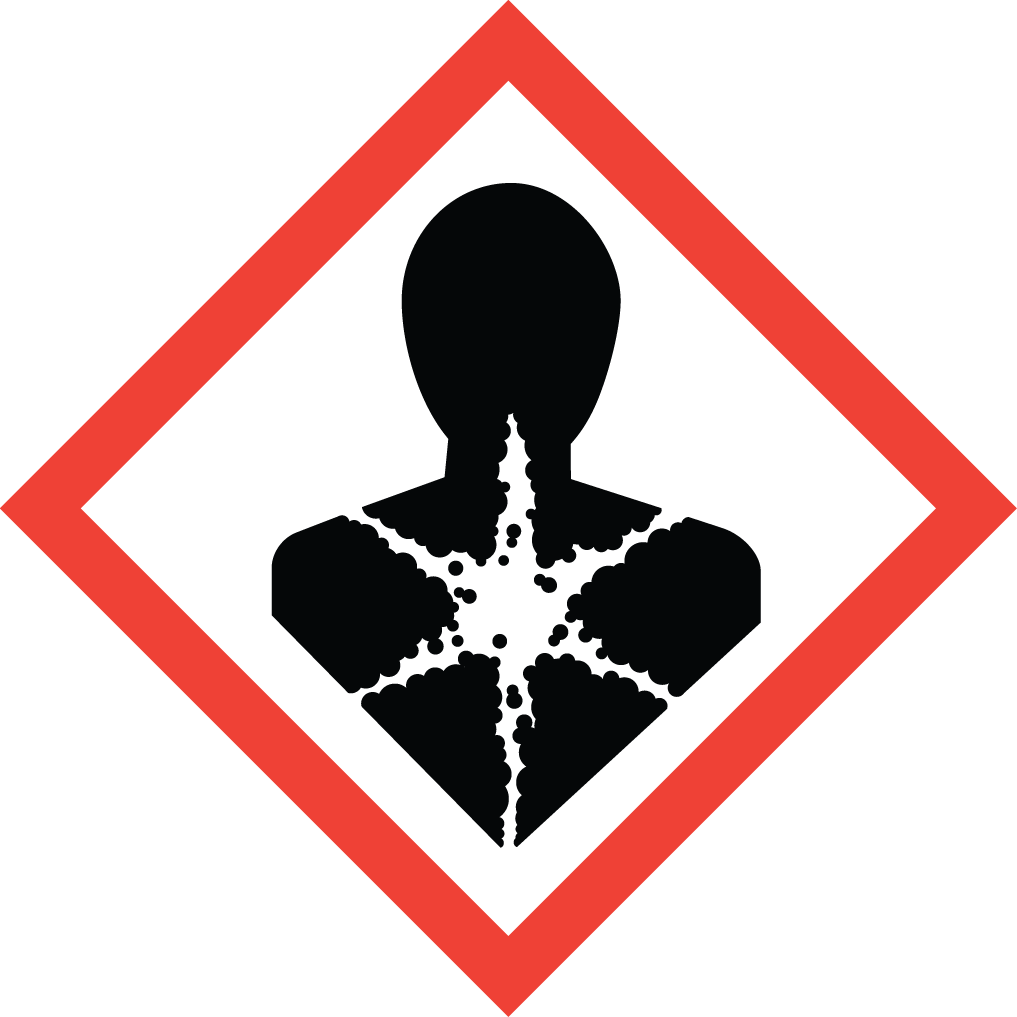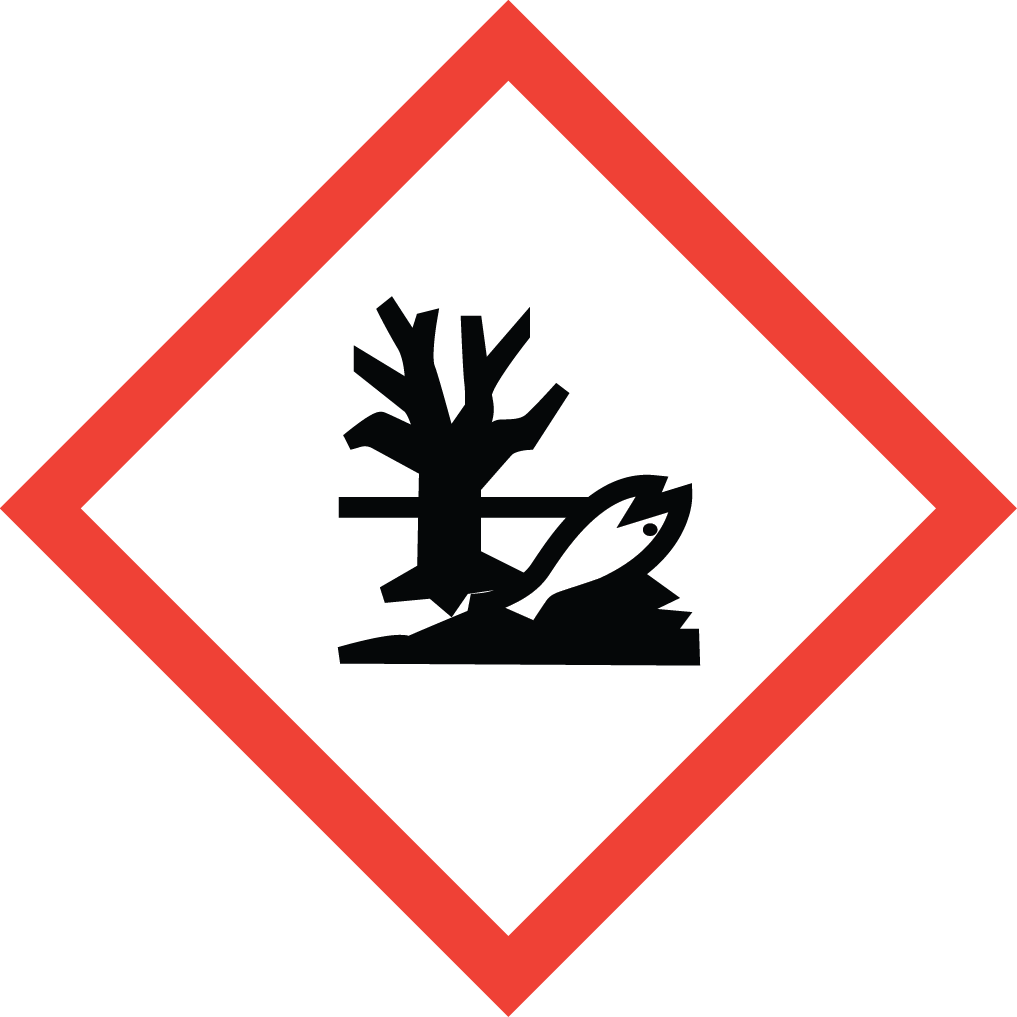Version 3.1
Date revised: 8/8/2023
SAFETY DATA SHEET
Conforms to regulation (EC) no. EU 453/2010
SECTION 1 - IDENTIFICATION OF THE SUBSTANCE/MIXTURE AND OF THE COMPANY/UNDERTAKING
1.1 Product Identifier
1.2 Relevant Identified Uses of the Substance/Mixture and Uses Advised Against
Investigational research by professional users
1.3 Details of the Supplier of the Safety Data Sheet
| Manufacturer National Diagnostics 305 Patton Drive Atlanta, GA 30036 (404) 699-2121 (800) 526-3867 info@nationaldiagnostics.com |
1.4 Emergency Telephone Number
ChemTel Inc.
Contract number MIS8894340
1-800 255-3924 (United States, Canada, Puerto Rico & US Virgin Islands)
01-800-099-0731 (Mexico)
400-120-0751 (China)
000-800-100-4086 (India)
1-300-954-583 (Australia)
0-800-591-6042 (Brazil)
+1-813-255-3924 (All other regions)
SECTION 2 - HAZARDS IDENTIFICATION
2.1 Classification of the Substance or Mixture
Classification according to Regulation (EC) No. 1272/2008 [EU-GHS/CLP]
H302 - Acute Toxicity-Oral (Category 4)
H351 - Carcinorgenicity (Category 2)
H411 - Chronic Hazards to the Aquatic Environment (Category 2)
2.2 Label Elements
| GHS Label Elements | ||
 |  | WARNING H302 - Harmful if swallowed |
 | ||
2.3 Other Hazards
None found.
SECTION 3 - COMPOSITION/INFORMATION ON INGREDIENTS
3.1 Substance
Chemical Names/Description
Naphthene; mothballs; tar camphor; naphthalin; white-tar
Chemical Formula
C10H8
Component List
| Component | % Comp. | CAS # | EC # |
|---|---|---|---|
| Napthalene | >95 | 91-20-3 | 202-049-5 |
SECTION 4 - FIRST AID MEASURES
4.1 Description of First Aid Measures
Inhalation
Remove to fresh air. If not breathing, give artificial respiration. If breathing is difficult, give oxygen. Call a physician.
Ingestion
DO NOT INDUCE VOMITING. If swallowed and the person is conscious, immediately give large amounts of water. Get medical attention.
Skin
Immediately flush skin with plenty of soap and water for at least 15 minutes while removing contaminated clothing and shoes. Get medical attention. Wash clothing before reuse. Thoroughly clean shoes before reuse.
Eyes
Immediately flush eyes with plenty of water for at least fifteen minutes, lifting lower and upper eyelids occasionally. Get medical attention immediately.
4.2 Most Important Symptoms and Effects, Both Acute and Delayed
Inhalation
The predominant reaction is delayed intravascular hemolysis with symptoms of anemia, fever, jaundice, and kidney liver damage.
Ingestion
May cause methemglobinemia, cyanosis, convulsions, and death. May cause severe digestive tract irritation with abdominal pain, nausea, vomiting and diarrhea. Ingestion of large quantities may cause severe hemolytic anemia and hemoglobinuria.
Skin
May cause rashes and allergy. Sensitized individuals may suffer a severe dermatitis.
Eyes
Redness and pain. Very high exposures can damage the nerves of the eye.
4.3 Indication of Any Immediate Medical Attention and Special Treatment Needed
Unknown/not applicable
SECTION 5 - FIRE FIGHTING MEASURES
5.1 Extinguishing media
Use media appropriate to the primary cause of fire.
5.2 Special Hazards Arising from the Substance/Mixture
Hazardous Combustion Products
Fire may produce irritating or poisonous gases.
Hazardous Decomposition Products
Carbon dioxide and carbon monoxide may form when heated to decomposition.
Hazardous Polymerization
Will not occur under normal conditions of use (See Sections 10.4 & 10.5).
5.3 Advice for Firefighters
In the event of a fire, wear full protective clothing and NIOSH-approved self-contained breathing apparatus with full facepiece operated in the pressure demand or other positive pressure mode.
5.4 Further Information
No data available.
SECTION 6 - ACCIDENTAL RELEASE MEASURES
6.1 Personal Precautions
Wear appropriate protective equipment as specified in Section 8.
6.2 Environmental Precautions
Prevent discharge into the environment. Dike spills and stop leakage where practical. Do not allow material to enter drains.
6.3 Methods and Materials for Containment and Cleaning Up
Eliminate source of ignition. Ventilate area. Cover with absorbent material (soda ash) to confine spill and sweep or shovel into container. Close container tightly. Avoid breathing vapors.
6.4 References to Other Sections
For disposal information see Section 13. For protective clothing and equipment see Section 8.
SECTION 7 - HANDLING AND STORAGE
7.1 Precautions for Safe Handling
Avoid contact and inhalation. Do not get in eyes, on skin, on clothing. Wash thoroughly after handling. Transfer methods should avoid static sparks. Use explosion proof ventilation.
7.2 Conditions for Safe Storage (including any incompatibles)
Keep in a tightly closed container, stored in a cooled, dry, ventilated area away from sources of heat or ignition. Protect from physical damage. Isolate from incompatible materials (section 10).
Incompatibles
Strong oxidizers, strong alkalis and strong mineral acids, mixtures of aluminum trichloride and benzoyl chloride. Reacts violently with chromic anhydride. Melted naphthalene will attack some forms of plastics, rubber, and coatings.
7.3 Specific End Uses
Investigational research by professional users
SECTION 8 - EXPOSURE CONTROLS/PERSONAL PRECAUTIONS
8.1 Control Parameters
ACGIH Threshold Limit Value (TLV):
10ppm, 52mg/m3(TWA)
OSHA Permissible Exposure Limit (PEL):
10ppm, 50mg/m3
8.2 Exposure Controls
Engineering Controls
Use explosion-proof ventilation equipment. Facilities storing or utilizing this material should be equipped with an eyewash facility and a safety shower. Use only under a chemical fume hood.
Respiratory Protection
If TLV of the product or any component is exceeded, a NIOSH/MSMA jointly approved self-contained breathing apparatus with a full facepiece operated in pressure-demand or other positive pressure mode is advised.
Eye Protection
Use chemical safety goggles and/or a full face shield where splashing is possible. Maintain eye wash fountain and quick-drench facilities in work area.
Skin Protection
Wear impervious protective clothing, including boots, gloves, lab coat, apron or coveralls, as appropriate, to prevent skin contact.
SECTION 9 - PHYSICAL AND CHEMICAL PROPERTIES
9.1 Information on Basic Physical & Chemical Properties
| a. Appearance | White crystals | b. Odor | Strong coal tar odor |
| c. Odor Threshold | 0.08ppm | d. pH | No information found |
| e. Melting/Freezing Point (oC) | 80 | f. Boiling point (oC) | 218 |
| g. Flash Point (oC) | 78.8 | h. Evaporation Rate | <1 |
| i. Flammability | N.A. | j. Upper/Lower Flammability or Explosive Limits | LEL:0.9; UEL:5.9 |
| k. Vapor Pressure | 1 @ 53C | l. Vapor Density (Air = 1) | 4.4 |
| m. Relative Density | 1.2 | n. Water Solubility | Insoluble in water |
| o. Partition Coefficient n-octanol/water | Log Pow 3.4 | p. Autoignition Temperature (oC) | 526 |
| q. Decomposition Temperature (oC) | N.A. | r. Viscosity | No data available. |
| s. Explosive Properties | N.A. | t. Oxidizing Properties | Not an oxidizer |
SECTION 10 - STABILITY AND REACTIVITY
10.1 Reactivity
Not reactive under normal conditions of use.
10.2 Chemical Stability
Stable at room temperature in sealed containers. Sublimes appreciably at temperatures above melting point.
10.3 Possibility of Hazardous Reactions
Will not occur under normal conditions of use (See Sections 10.4 & 10.5).
10.4 Conditions to Avoid
Avoid heat, sparks, flames and other ignition sources and incompatibles
10.5 Incompatible Materials
Strong oxidizers, strong alkalis and strong mineral acids, mixtures of aluminum trichloride and benzoyl chloride. Reacts violently with chromic anhydride. Melted naphthalene will attack some forms of plastics, rubber, and coatings.
10.6 Hazardous Decomposition Products
Carbon dioxide and carbon monoxide may form when heated to decomposition.
SECTION 11 - TOXICOLOGICAL INFORMATION
Product LD50 Values
Oral Rat LD50 (mg/kg)
490
Dermal Rabbit LD50 (mg/kg)
20
Component Cancer List Status
| NTP Carcinogen | |||
| Known | Anticipated | IARC Category | |
|---|---|---|---|
| Napthalene | No | No | None |
Potential Health Effects
Inhalation
Inhalation of dust or vapors can cause headache, nausea, vomiting, extensive sweating, and disorientation.
Ingestion
Toxic. Harmful if swallowed. May cause liver and kidney damage.
Skin
Can irritate the skin and, on prolonged contact.
Eyes
Vapors and solid causes irritation.
Carcinogenicity
Not classifiable as a human carcinogen.
Mutagenicity
Micronucleus test on human lymphocyte yielded 30 mg/L; Cytogenetic analysis on hamster ovary yielded 30 mg/L; Sister chromatid exchange on hamster ovary yielded 15 mg/L. Standard Draize tests: administration onto the skin of a rabbit yielded 495 mg, which is mild; and administration into a rabbit's eye yielded 100 mg, which is also mild.
Reproductive Toxicity
No information available.
Teratogenic Effects
Naphthalene and its metabolites have been reported to cross the human placenta in amounts sufficient to cause fetal toxicity.
Routes of Entry
Ingestion, inhalation, skin and eye contact.
Target Organ Statement
May affect liver, kidney, blood and central nervous system.
SECTION 12 - ECOLOGICAL INFOMATION
12.1 Toxicity
| Vertebrates | Invertebrates | Algae | Microorganisms | |
|---|---|---|---|---|
Aquatic Toxicity (ppm unless otherwise noted) | LC50 (96hr, fathead minnow) 6mg/l | EC50 (48hr, daphnia) 2mg/l | IC50 (24hr) 29mg/l |
| Birds | Arthropods | Plants | Microorganisms | |
|---|---|---|---|---|
Terrestrial Environment Toxicity (ppm unless otherwise noted) | No data | No data | No data | No data |
12.2 Persistence and Degradability
Readily biodegradable (99% in 15 days)
12.3 Bioaccumulative Potential
BCF 23=140 (low bioaccumulation)
12.4 Mobility in Soil
Log Koc 2.8
12.5 Results of PBT and vPvB Assessment
No data
12.6 Other Adverse Effects
None
SECTION 13 - DISPOSAL CONSIDERATIONS
13.1 Waste Treatment Methods
Offer surplus or non-recyclable product to licensed disposal company. Disposal is subject to user compliance with applicable law and product characteristics at time of disposal. Dispose of packaging as product.
SECTION 14 - TRANSPORT INFORMATION
| ADR/RID | IATA | IMO | DOT | |
|---|---|---|---|---|
| 14.1 UN Number | 1334 | 1334 | 1334 | 1334 |
| 14.2 Shipping Name | Naphthalene, Refined | Naphthalene, Refined | Naphthalene, Refined | Naphthalene, Refined |
| 14.3 Hazard Class | 4.1 | 4.1 | 4.1 | 4.1 |
| 14.4 Packing Group | III | III | III | III |
| 14.5 Environmental Hazards | N.A. | N.A. | Not regulated | N.A. |
| 14.6 Special Precautions | N.A. | N.A. | N.A. | N.A. |
SECTION 15 - REGULATORY INFORMATION
15.1 Safety, Health and Environmental Regulations/Legislation Specific for the Substance/Mixture
United States
TSCA Regulatory Statement
All intentional ingredients are listed on the TSCA Inventory.
SARA 311/312 Hazard Categories
| Component | Fire | Pressure | Reactivity | Acute | Chronic |
|---|---|---|---|---|---|
| Napthalene | Yes | No | No | Yes | Yes |
Europe
EEC Regulatory
All intentional ingredients are listed on the European EINECS Inventory.
SECTION 16 - OTHER INFORMATION
Revisional Updates
8/8/2023 - Updated Section 14.5
4/26/2019 - Updated Section 1.4
5/29/2015 - Updated Sections 2.1 and 3.1
8/12/2013 - Released Version 1.0
NFPA Codes
Health 2 Flammability 2 Reactivity 0
MANUFACTURER DISCLAIMER: The information given herein is offered in good faith as accurate, but without guarantee. Conditions of the use and suitability of the product for particular uses are beyond our control. All risks of use of the product are therefore assumed by the user. Nothing is intended as a recommendation for uses which infringe valid patents or as extending license under valid patents. Appropriate warnings and safe handling procedures should be provided to handlers and users.